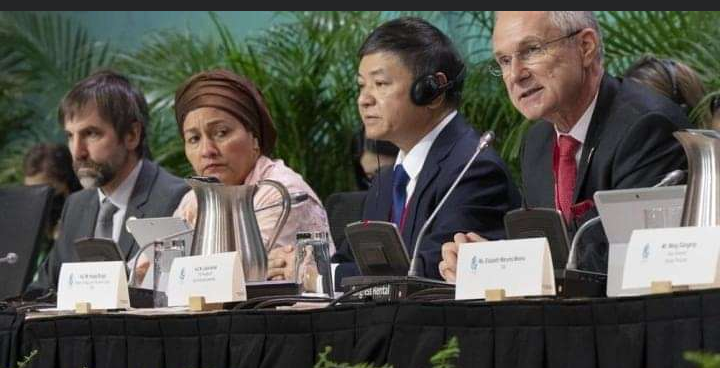The ongoing biodiversity conference in Montreal, Canada, has made significant progress towards important agreements such as capacity building, technical and scientific co-operation, and approaches to strengthening the transparency of the implementation of the global biodiversity framework.
At the opening of the high level segment on Thursday, attended by 126 ministers, 77 deputy ministerial representatives and 68 international organisations, Huang Runqiu, China’s environment minister and the president of COP15, revealed that the conference had reached a clean text on most of the agenda items.
However, a few complex and technical issues remain to be resolved, and some of them will go a long way to determine the success of the meeting.
An ambitious post-2020 Global Biodiversity Framework (GBF), more financial support for developed countries’ conservation efforts, and “clarity around how wealth resulting from rapid advances on genetic data sequencing technologies and commercial applications will be shared equitably” are the three most crucial things the COP must achieve before ending on December 19, according to Amina Mohammed, UN Deputy Secretary-General.
“Excellencies, ladies and gentlemen, it is crucial that we leave Montreal with these three elements in place,” she said at the opening of the high level segment on Thursday.
The three elements mentioned by Mohammed are being discussed under agenda items Global Biodiversity Framework (GBF), Digital Sequence Information (DSI) and Resource Mobilisation at the COP. Here are a few takes on them:
Global Biodiversity Framework
The Post-2020 Global Biodiversity Framework is an ambitious plan for protecting the world’s fragile species and reversing wild space decline so that by 2050, the world’s shared vision of “living in harmony with nature” is achieved.
Aimed at replacing the Aichi Biodiversity Targets, the world’s manual for protecting and relating with nature from 2011 and 2010, the first draft of the framework was released by the Secretariat of the UN Convention on Biological Diversity (CBD) in September 2021, after two years of careful development.
Analysis revealed that none of the 20 Aichi Biodiversity Targets was fully met and the world’s biodiversity continued to decline in the 10 years of its use, hence the push for a more ambitious framework with mechanisms for transparent and accountable monitoring of progress and joint implementation by governments, NGOs and indigenous peoples, among others.
Since its release, the draft has undergone different modifications, and the latest draft is expected to be modified again in Montreal and then adopted.
Digital Sequence Information
To ensure benefits from the utilisation of biodiversity anywhere are fairly and equitably shared, a group of countries entered into an agreement known as the 2010 Nagoya Protocols, which came into force in 2014.
However, events quickly overtook the agreement, which only applies to physical genetic materials, as the field of genetics quickly went high tech and DNA information were being stored in digital databases across the world.
This quickly raised a few thorny questions, including whether a biological specie is the same as its digitised DNA and whether the agreed global standards on access to and sharing of benefits from biological species should apply to the latter.
Known as Digital Sequencing Information or DSI, arguements in favour and against the diverse views have come with potential cons and pros, but some countries have threatened never to sign the much anticipated framework if the DSI is not included in the Nagoya Protocols.
Resource Mobilisation
Another thorny question in Montreal is whether a new fund should be created for conservation as part of the final framework. While countries in the global south are pushing for a separate fund other than the Global Environment Facility (GEF) fund, wealthy donor countries think China and a few other countries currently on the GEF recipients list should rather join the donor list to broaden the funding base for the benefit of poor countries.
China, Brazil, India, Mexico and Indonesia top the list of countries receiving GEF funding and are positioned to be among the top beneficiaries of the $5.6 billion earmarked for the next four years (2022-2026), according to The Guardian. However, wealthy donor countries believe that some of these economies have grown substantially in the last 30 years and should be advancing the donation purse now.
This controversy has led to walkouts by global south countries in the ongoing conference. Many observers believe that failure of the parties to reach a strong agreement on this will lead to a weak framework.







